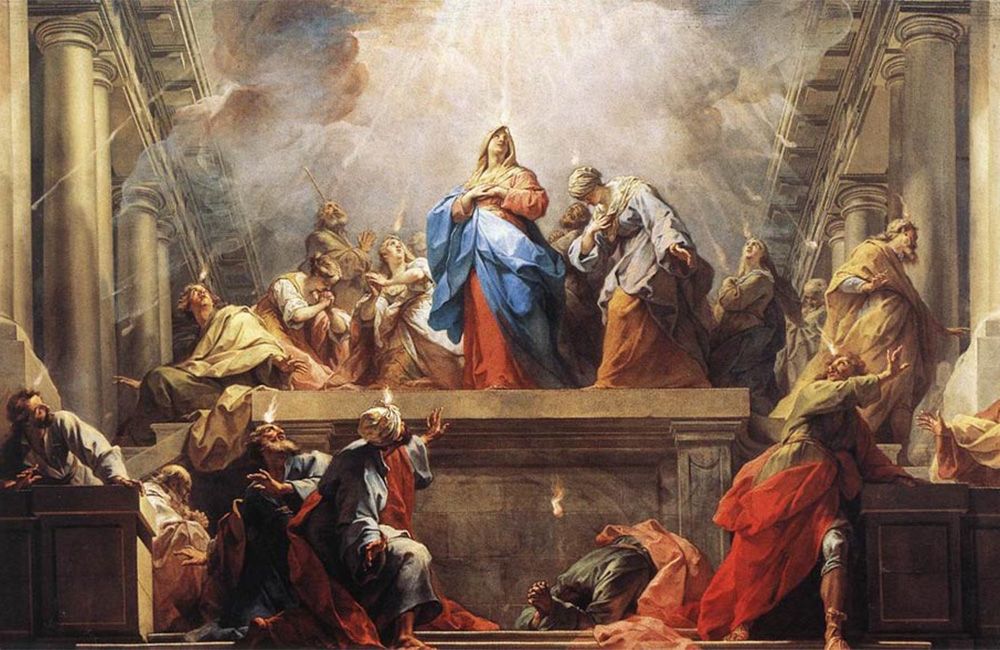
It has been a hard year for most of the world. The COVID-19 pandemic, which we thought was finally over, remains. The Delta variant is letting us know—even with vaccines, social distancing, and masks—that we’re not yet out of the woods. People are tired, frustrated, scared, and in need of comfort. Whom will they turn to for comfort?
For many, it’s Mary, the mother of God, aka the Virgin Mary, who is experiencing a kind of cultural renaissance right now. An article on Religion News Service titled “Mary, mother of Jesus, returns as an icon for pop stars and social justice warriors” (story includes profanity) pretty much sums up the recent phenomena, which is happening all over the world. [1]
Says the article, “Catholic author and University of California, Berkeley lecturer Kaya Oakes is not surprised by the new attention paid to Mary, noting that her appeal tends to grow when times are hard. ‘Mary represents this side of God that is nurturing and will stay with you when you’re in pain,’ Oakes said. ‘We’re coming out of this really traumatic phase in world history with the pandemic, and people have needed images of God that were more resonant with that compassionate, rather than judgmental, side of the divine.’”
Interestingly, the article makes a point to include Pope Francis’ insistence against the Catholic Church’s viewpoint of Mary as “co-redemptrix” with Jesus, even though history, tradition, and, as Oakes herself inferred, experts seem to say otherwise. Did not, for instance, Pope Leo XIII state in one of his encyclicals, “In the Rosary all the part that Mary took as our co-Redemptress comes to us”? [2]

She’s Everywhere
Mary’s popularity is fast becoming ubiquitous. She’s in the music scene, the fashion world, in contemporary art. She’s even got her own tarot card deck.
She’s “a feminist beacon,” appearing alongside such Jewesses as Mexican artist Frida Kahlo and American jurist Ruth Bader Ginsburg; she’s “an icon to a younger generation of all faiths and no faith that has put social justice at the center of its hopes for a better world.”
This is actually nothing new. The Catholic Church has been building this characterization of Mary for ages. The Sisters of Charity of the Blessed Virgin Mary, for instance, founded in Dublin, Ireland, in 1832, claims: “The Sisters of Charity of the Blessed Virgin Mary has long espoused peace, nonviolence, and putting the needs of the poor and vulnerable first, especially for the rights and dignity of women and children. We empathize with the plight of all those who are marginalized by our society, believing that fear, ignorance, and prejudice work against justice and the Gospel message.” [3]
The Magnificat, what Catholics call Mary’s praise in the Gospel of Luke made into song, is traditionally part of Catholic and Orthodox worship services. It reads, in part, “He has put down the mighty from their thrones, and exalted the lowly. He has filled the hungry with good things, and the rich He has sent away empty” (Luke 1:52, 53).
Today, her inspired words have been turned into an anthem for the oppressed.
Even a bastion of Protestantism like Wheaton College, which graduated Billy Graham in 1943, has seen a growing interest in Mary.
Mary—the Myths
Why is it that the world needs Mary to point people to the “compassionate … side of the divine”? In the Bible, it is more than clear that God is the embodiment of compassion.
“I have compassion on the multitude,” said Jesus (Matthew 15:32), said Jesus. “When the Lord saw her, He had compassion on her” (Luke 7:13), Luke described. “Jesus, when He came out, saw a great multitude and was moved with compassion for them” (Mark 6:34), recounted Mark.
In fact, there is little in the Bible about Mary in general and absolutely nothing about her in any of the roles that the Roman church as long been promoting and that have been picked up on today.
Contrary to Roman Catholic dogma, which falsely declares that Mary was born free from sin through the doctrine of “Immaculate Conception,” Mary was a sinner as everyone else is—“all have sinned and fall short of the glory of God” (Romans 3:23).
The same with the so-called “Bodily Assumption” of Mary, which claims that she, “having completed the course of her earthly life, was assumed body and soul into heavenly glory,” and that not only is she now in heaven but that she answers the prayers of the faithful. There is not even the slightest scriptural support for this. Not only does it contradict what the Bible teaches about both death and resurrection, it clouds the personage and role of our Lord and Savior Jesus Christ, “for there is one God and one Mediator between God and men, the Man Christ Jesus” (1 Timothy 2:5). [4]
We do not need Mary in order to get to Jesus. No question, God used Mary in an amazing way. But so did He with many others in Scripture. The apostles Peter and Paul, the prophets Moses and Elijah and Daniel, the favorited son Joseph, great King David—all these had their lives transformed by God and all these glorified God by their lives. But that points to God’s greatness, not theirs. And it is the same with Mary.
To turn her into something that she is not is to defile the memory of who she really was—and what’s worse, to blaspheme God.
To learn more about Mary and what the Bible actually teaches about this remarkable woman, go to our informative website:
[1] https://religionnews.com/2021/07/26/mary-mother-of-jesus-returns-as-an-icon-for-pop-stars-and-social-justice-warriors/
[2]https://www.vatican.va/content/leo-xiii/en/encyclicals/documents/hf_l-xiii_enc_08091894_iucunda-semper-expectatione.html
[3]https://www.bvmsisters.org/social-justice/#
[4]https://www.vatican.va/content/pius-xii/en/apost_constitutions/documents/hf_p-xii_apc_19501101_munificentissimus-deus.html